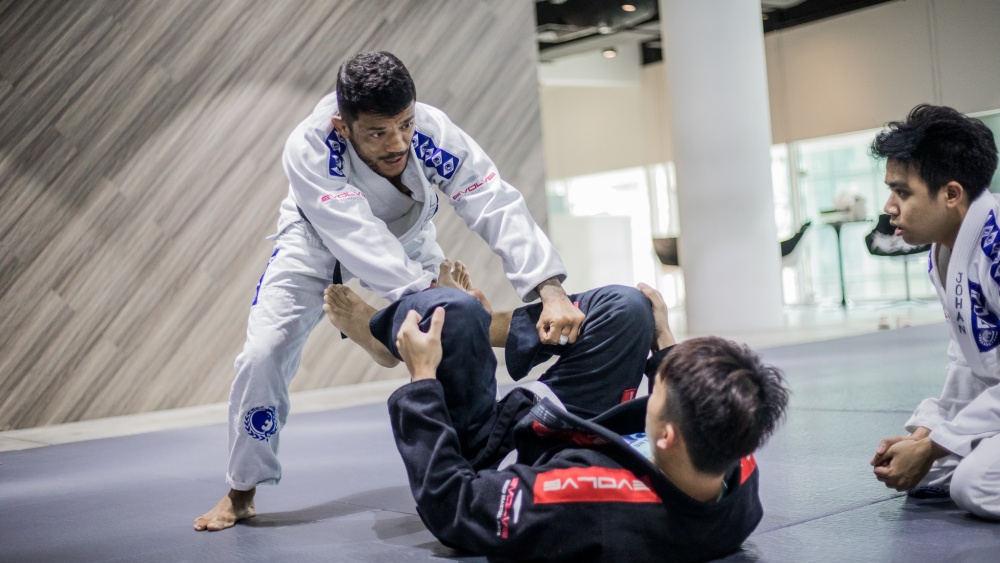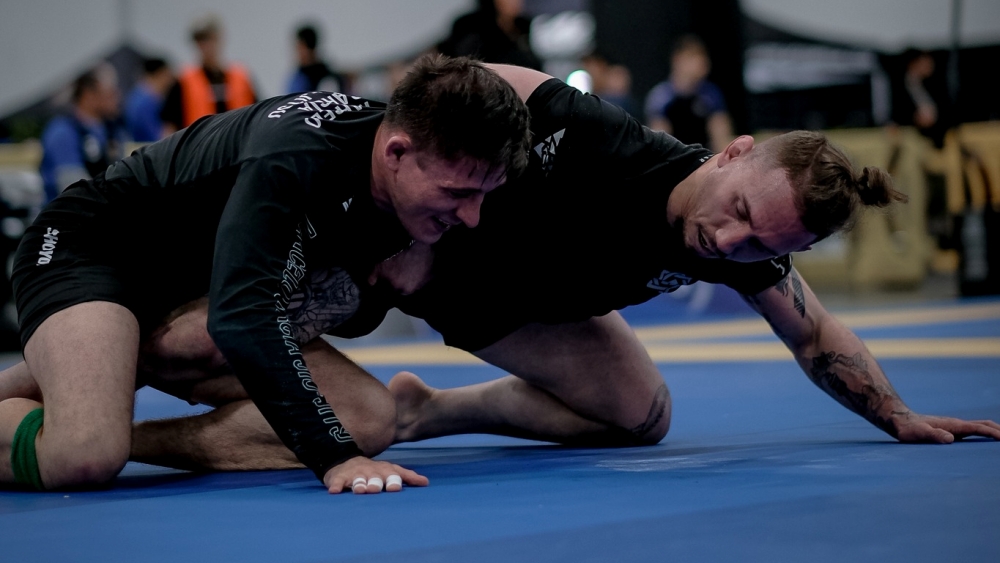Guard passing is one of the most critical skills when training in Brazilian Jiu-Jitsu. From white to black belt, learning to pass the opponent’s legs will be invaluable as it will open up many opportunities to attack with pins and submissions. For this reason, beginners are taught how to pass the guard from their first day of training. Today, we will discuss some of the most effective guard passes beginners should know.
Importance Of Passing The Guard
Passing the guard has two main benefits. First, it teaches the value of bypassing the opponent’s legs using specific techniques to overcome the guard. The guard is where one uses their body (particularly the legs) to block and oppose the guard pass. The guard player is responsible for keeping the opponent inside their guard for as long as possible.
The longer you hold someone inside your guard, the higher the probability you’ll sweep or submit the opponent. Guard passing will help keep you safe from these threats by escaping the guard and attacking the opponent’s body once you get inside. This transition will work well in your favor as you’re now the one who’s on the offensive.
The second benefit of passing the guard is that it places you in favorable situations where you can attack effectively. Once you pass the guard, you are now in a position to use pins and submissions against your opponent. This will inevitably force them to stay defensive and waste energy.
You don’t have to immediately go for submissions once you establish a pin. Once you get to, let’s say, side control or mount, you can stay in the position and slowly sap your opponent’s energy by crushing them with your body weight. Doing this will force them to make slight positional mistakes, and then you can capitalize by snatching a submission.
Now with that out of the way, here are some of the best guard passes to learn as a beginner.
1) Single Stack Pass
The single stack pass is perhaps the first passing technique you’ll learn in BJJ. It is a classic in every sense of the word and has proven its effectiveness for many decades.
In this video, Mauricio Gomes shows his approach to the single stack pass. He starts by first posturing up while twisting his body slightly to create space. He shoots his hand through the space and maintains good posture by slightly sinking back and keeping his hand tucked near the instep.
Next, he grabs the opponent’s belt (or sleeve) while lifting the leg to his shoulder. He spreads his base as he moves at an angle, allowing the opponent’s leg to clear on one side. Stabilize the guard pass and proceed to your next attack.
2) Double Under Stack Pass
The second technique we’ll show is the double under stack pass. This is very similar to the first guard pass, but you stack both legs instead of one.
BJJ black belt Rodrigo Freitas shows the fundamental steps of the technique. Start by swimming both arms inside and grip near the opponent’s belt line. Once you establish the grip, remove the slack by bringing the opponent near you as you grab near the collar. From here, you can reinforce your pass by gripping near the hip with your other hand as you sprawl and move at an angle to pass. You can allow the opponent’s leg to clear as you drive forward. Alternatively, you can grab the foot as you pressure your way to side control.
The knee cut (aka knee slice) pass is a great passing technique to blast through the opponent’s guard. It is highly effective in gi and no-gi grappling and can be used to pass the open guard as well as the half guard.
Jeff Glover explains how to use the knee cut pass in this video. Open the closed guard by putting both hands on the opponent’s biceps to pin their upper body on the mat. Use your weight to push their body to the mat as you carefully stand up and maintain your balance. Standing up to open the closed guard requires balance and flexibility. Open the guard using your knee as a wedge and push the legs open as you perform a staggered stance.
The right knee between the glutes will help you land on combat base as you sit back down once the guard has opened. Use your right knee to angle to the side and pass on top of the opponent’s thigh.
Pummel and grab an underhook with your right hand and use your left hand to grab the opponent’s other wrist. Pull it up as you slide your right knee to pass. This will land you in the scarf hold position (kesa gatame). You can move to your offensive cycle from here. You can also transition to more stable positions like side control as an alternative.
The toreando pass (aka bullfighter pass) is another classic technique that beginners should explore. It is one of the first standing guard passes you’ll likely learn and is versatile enough that you can perform slight variations of the technique depending on the finishing mechanic.
Stephan Kesting breaks down the toreando pass and its variations. The basic premise of the toreando is to redirect the opponent’s legs so that you can have space for the guard pass. The toreando can be applied in many ways. Stephan expertly explains the difference between each variation. If you are new to the toreando pass, we encourage you to focus on the mechanics of redirecting the legs, as it is the most complex step for all variations.
Conclusion
These guard passing techniques will serve you well regardless of rank. These moves chain well with each other and can be used in all grappling situations, even in mixed martial arts.
You don’t have to learn many complicated techniques to become an effective guard passer. What’s important is to master what you know to the point that you can use it in varying situations. The sharper your techniques are, the better the probability of them working against high-level training partners and opponents.
You may also like:

















